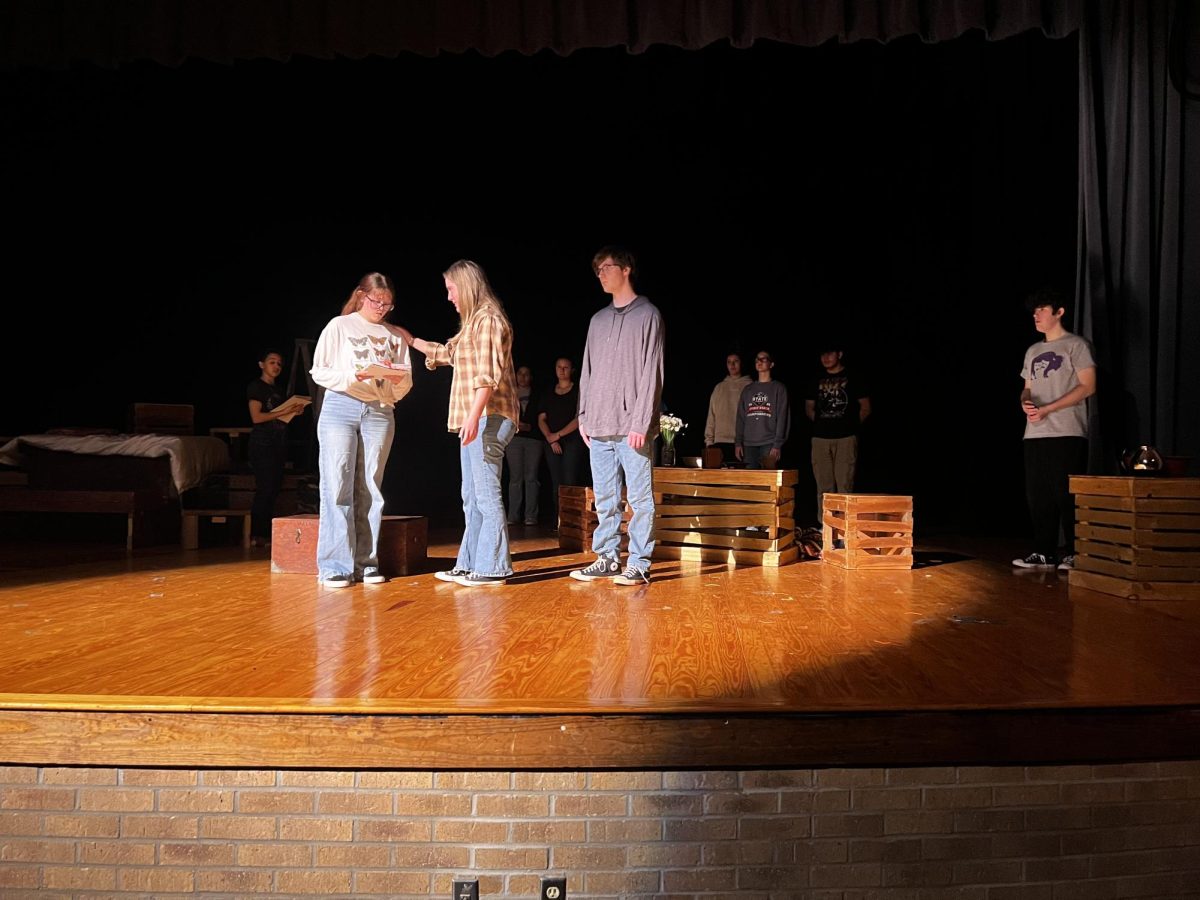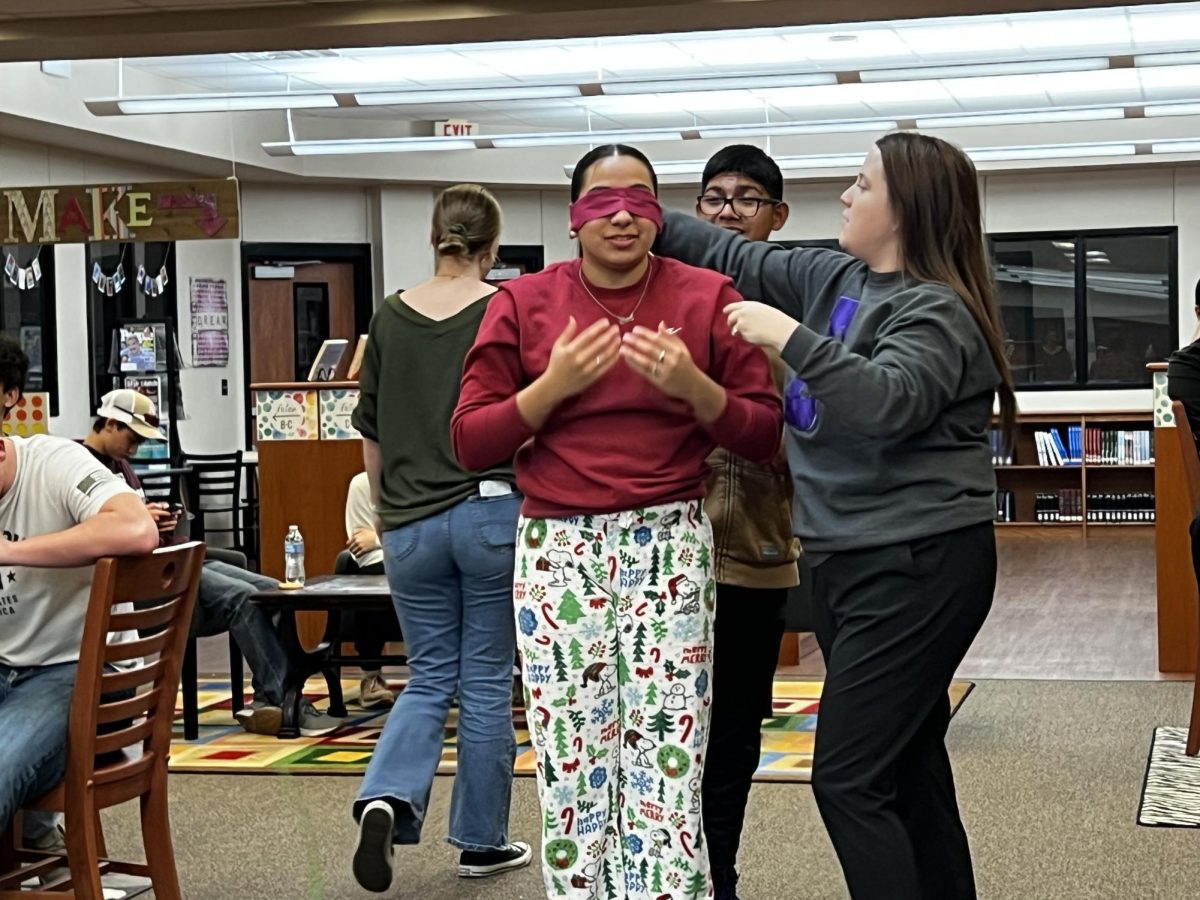There are two parts that make up a marching band: the band itself and the color guard. The color guard is non-musical and provides visual interest by using flags, rifles or other objects. This year the Bison Brigade has grown to six color guard members.
Sean Haycock is a first-year guard member. He decided to join the guard after watching his friend Garret practice every single day. He says he thought the guard was really neat, so he wanted to give it a go.
“I’m doing something I enjoy being a part of,” Haycock said. “It’s very beautiful, and it just takes your breath away, especially if you get hit in the throat or diaphragm,” he joked
Haycock says he is proud of being in the guard and plans to join again next year.
“I love trying out new flips and learning more moves,” Haycock said. “It’s a lot of hard work, but it is a lot of fun at the same time.”
Junior Garrett McAlpine is this year’s color guard captain. This is his second year in guard and his first year having a leadership position. McAlpine joined color guard because while he wanted to be a part of the band, he didn’t think he could learn an instrument.
“Once I became a part of it, I realized I liked it a lot and I enjoyed watching myself grow and get better,” McAlpine said. “ Now I’ll work on a maneuver and within a few days or weeks I’ll have the skill mastered.”
Color guard director Katie Villarreal, who has been teaching the guard for three years, says that she believes being successful and skilled in it all depends on how much you love it.
“It is difficult for any beginner and sometimes even veterans,” Villarreal said. “There are a lot of last-minute changes to the choreography, and sometimes you learn new changes as early as twenty minutes before you perform.”
There are a ton of small detailed elements that go into color guard performances.
“If one person is just a quarter of a second ahead or behind, it alters the entire effect of the move,” Villarreal said. “There are hand positions that can’t be switched around just to make it easier. There are also planes, angles, and checkpoints that have to come together perfectly when you are performing choreography as a group.”
While directing a group that has to be absolutely perfect all the time down to the last detail can be a stressful job, Villarreal said that she absolutely loves teaching the guard.
“I am thrilled that we have a dedicated group of individuals that have put in a lot of hard work so far this year,” Villarreal said. “Currently the Brigade has 16 sets learned, which is more sets than what we had learned this time last year. I am looking forward to a great year.”














